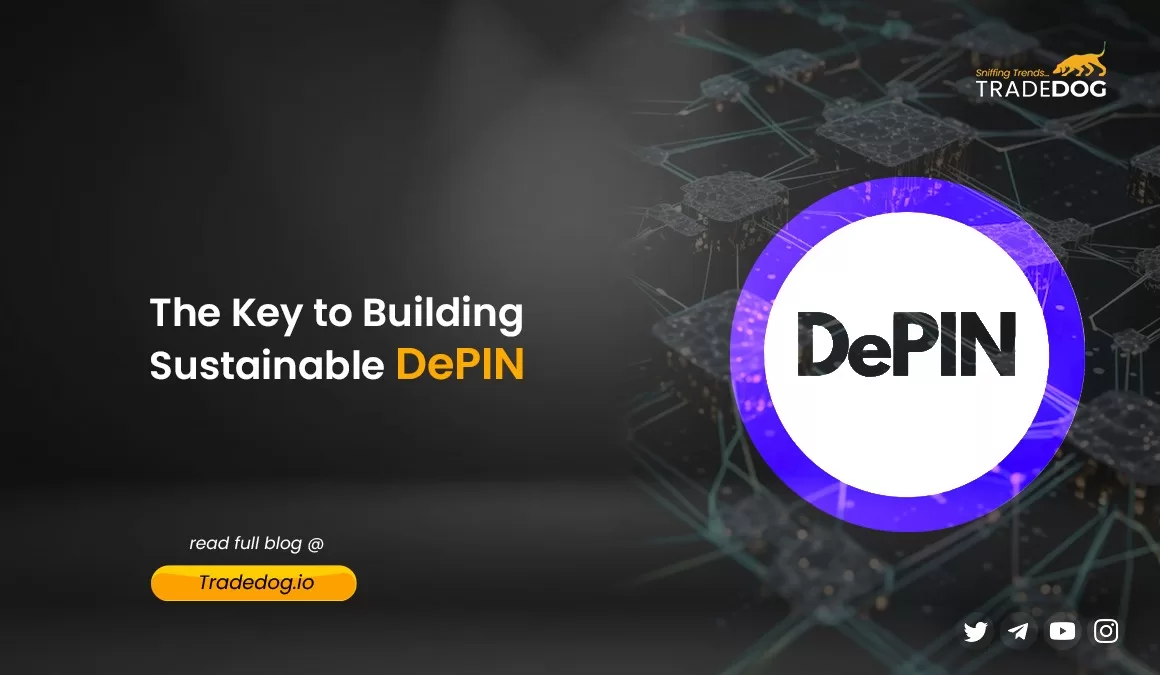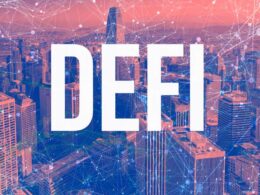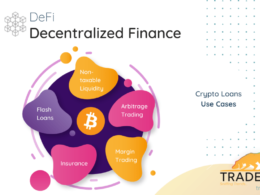Quick Links
Decentralized Physical Infrastructure Networks (DePINs) have captured the imagination of many, promising a revolutionary approach to building and managing real-world infrastructure. But amidst the excitement, a crucial question lingers: how do we ensure DePINs are sustainable in the long run? Envisioned as a transformative force, DePIN projects aim to leverage crypto incentives to mobilize communities and build groundbreaking products that were previously unimaginable. The promise of DePIN lies in its ability to align millions of participants towards a common goal, ushering in a new era of decentralized infrastructure and services.
Many visionaries in crypto believe that DePIN will be among the pivotal use cases that propel cryptocurrency into the mainstream. Drawing parallels to the explosive growth witnessed in NFTs and stablecoins, proponents foresee a tidal wave of adoption driven by the unparalleled capabilities of DePIN. Projects such as Helium Mobile, Render Network, and Hivemapper have already showcased the transformative potential of DePIN by delivering innovative solutions powered by crypto-economics.
DePIN presents an exciting glimpse into the future, but to truly thrive beyond a passing trend, upcoming projects must take notes from the pioneers in the field. The initial wave of DePIN ventures tried various approaches, encountered numerous setbacks, and obtained invaluable insights along the way. However, it seems like these lessons have been overlooked or forgotten. Without this crucial context, new DePIN initiatives run the risk of repeating the same mistakes, potentially triggering a cycle of rapid growth followed by a sharp decline, which could tarnish the reputation of the entire sector.
The Static Rewards Trap
The Static Rewards Trap represents a critical challenge in designing and implementing sustainable DePIN projects. This trap arises from the temptation to adopt a simplistic reward mechanism wherein all contributions receive the same fixed rewards, irrespective of their quality, impact, or relevance to the network’s objectives. While such an approach may appear straightforward and convenient in the short term, it undermines the intrinsic incentive structure of the platform and jeopardizes its long-term viability.
Understanding the Pitfalls
Let us take a hypothetical example of a DePIN initiative focused on building a decentralized energy grid to provide renewable electricity to remote communities to understand the pitfalls of the static reward model.
- Misaligned Incentives: If the DePIN project offers static rewards to all contributors irrespective of the quality or impact of their contributions, there may be a misalignment of incentives. Contributors may prioritize the installation of solar panels in areas with abundant sunlight, where electricity generation is already ample, in order to maximize their token rewards. This could lead to inefficient resource allocation, with resources being directed towards areas with less need, rather than areas where reliable electricity is most urgently required.
- Lack of Accountability: Without mechanisms to differentiate between high-quality and low-quality contributions, there may be little accountability within the network. Contributors might exploit the system by deploying substandard or unreliable energy infrastructure to inflate their token rewards, without delivering tangible benefits to the communities they serve. This lack of accountability erodes trust in the project and undermines its credibility, potentially deterring community members from relying on the decentralized energy grid.
- Stagnation and Redundancy: Static rewards can foster complacency and hinder innovation within the DePIN project. Contributors may lack incentive to improve or optimize their energy infrastructure if their rewards remain constant regardless of their efforts. This could lead to stagnation in the development of the decentralized energy grid, with infrastructure failing to evolve to meet changing needs or technological advancements. As a result, valuable opportunities for innovation and improvement may be missed, ultimately hindering the project’s long-term sustainability and effectiveness.
- Uneven Distribution of Resources: Treating all contributions equally with static rewards fails to account for variations in the value and impact of different contributions. If token rewards are distributed uniformly to all contributors, regardless of the energy demand or geographical characteristics of different regions, resources may be disproportionately allocated. This could result in an uneven distribution of energy infrastructure, with some areas receiving excess investment while others remain underserved or overlooked. Such disparities could exacerbate existing inequalities and hinder efforts to achieve universal access to renewable electricity.
Designing Dynamic Rewards
Dynamic rewards represent a paradigm shift in the incentivization model of DePIN projects. By incorporating dynamic reward mechanisms, projects can reward contributions based on their real-world impact, fostering a culture of productivity and innovation. For a better understanding, let us discuss how dynamic rewards tackle the previously mentioned challenges by emphasizing the primary dimensions for dynamic rewards within DePIN projects:
- Geography: Dynamic rewards take into account the geographical value of infrastructure, ensuring that resources are allocated efficiently to maximize the utility of the network. Contributors deploying renewable energy infrastructure in regions with high energy demand or limited access to electricity may receive higher token rewards, incentivizing investment in areas where renewable energy can have the greatest impact.
- Contributor Productivity: By rewarding higher-productivity contributors, dynamic token models incentivize meaningful contributions and drive overall network growth. Contributors who consistently demonstrate productivity and efficiency in deploying infrastructure or maintaining network integrity are rewarded proportionately, encouraging a culture of excellence and innovation within the project.
- Contributor Quality: Quality assurance is prioritized in dynamic token models, with incentives tailored to incentivize high-quality contributions. Contributors who adhere to established standards and demonstrate excellence in their work receive higher token rewards, fostering a commitment to quality and integrity within the project ecosystem.
- Network Progress: As the network evolves and matures, dynamic rewards adjust to reflect its increasing utility and value. Contributors are appropriately rewarded for their ongoing efforts in advancing the project, ensuring that incentives remain aligned with the project’s objectives and the needs of its users. This flexibility allows the project to adapt to changing circumstances and maintain momentum towards its long-term goals.
Key Principles
DePIN embodies the principles of sustainability at its core. By fostering collaboration, transparency, and inclusivity, DePIN aims to empower communities and address societal challenges effectively. However, the realization of a sustainable DePIN ecosystem requires a concerted effort and adherence to key principles.
1. Environmental Responsibility
As digital platforms continue to proliferate, the environmental impact of data storage and processing has come under scrutiny. Sustainable DePIN implementation involves prioritizing eco-friendly practices, such as utilizing renewable energy sources for data centers, optimizing algorithms to minimize energy consumption, and promoting electronic waste recycling initiatives. By minimizing its carbon footprint, DePIN can contribute to global efforts to combat climate change.
2. Community Engagement
Central to the sustainability of DePIN is active community involvement. By fostering an inclusive environment where diverse voices are heard and respected, DePIN can harness collective wisdom to address societal challenges effectively. Community engagement initiatives, such as open forums, feedback mechanisms, and participatory decision-making processes, enable stakeholders to contribute meaningfully to the development and governance of the platform.
3. Ethical Data Governance
Data privacy and security are paramount in the digital age. Sustainable DePIN implementation entails robust data governance frameworks that prioritize user privacy, consent, and data security. By adhering to ethical data practices, such as anonymization, encryption, and user-controlled data access, DePIN can foster trust among its users and uphold the principles of transparency and accountability.
4. Long-Term Viability
Sustainability encompasses not only environmental and social considerations but also economic viability. Sustainable DePIN development involves establishing a resilient economic model that ensures the platform’s long-term sustainability. This may entail exploring diverse revenue streams, such as tokenomics, subscription models, or value-added services while ensuring affordability and accessibility for all users.
5. Continuous Innovation
The pursuit of sustainability requires a commitment to continuous innovation and improvement. Sustainable DePIN development involves embracing emerging technologies, exploring novel solutions to societal challenges, and adapting to evolving user needs and preferences. By fostering a culture of innovation and experimentation, DePIN can remain agile and resilient in the face of change.
Conclusion
By leveraging crypto incentives and community collaboration, DePin projects aim to revolutionize infrastructure and services, with many foreseeing their pivotal role in driving mainstream adoption akin to the rise of NFTs and stablecoins. However, to ensure their long-term viability, they must navigate challenges such as the Static Rewards Trap, which underscores the importance of adopting dynamic reward mechanisms that incentivize productivity and innovation while avoiding stagnation.
Further, building a sustainable DePIN ecosystem requires a holistic approach that encompasses environmental stewardship, community engagement, ethical data governance, economic viability, and continuous innovation. By adhering to these principles, DePIN can realize its vision of serving the public interest while minimizing its ecological footprint and ensuring the well-being of future generations. As digital platforms continue to play an increasingly prominent role in shaping society, the pursuit of sustainability is not merely an option but a necessity.









